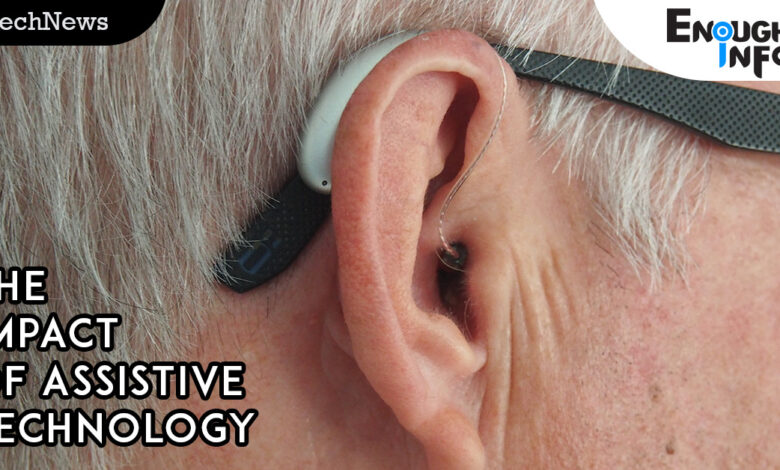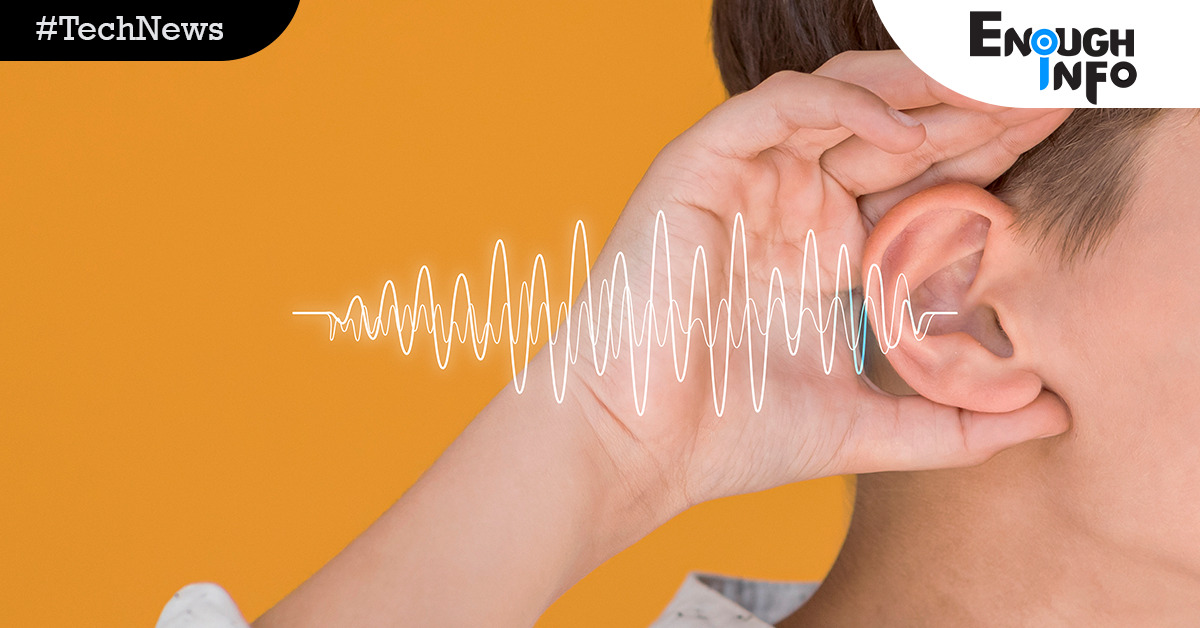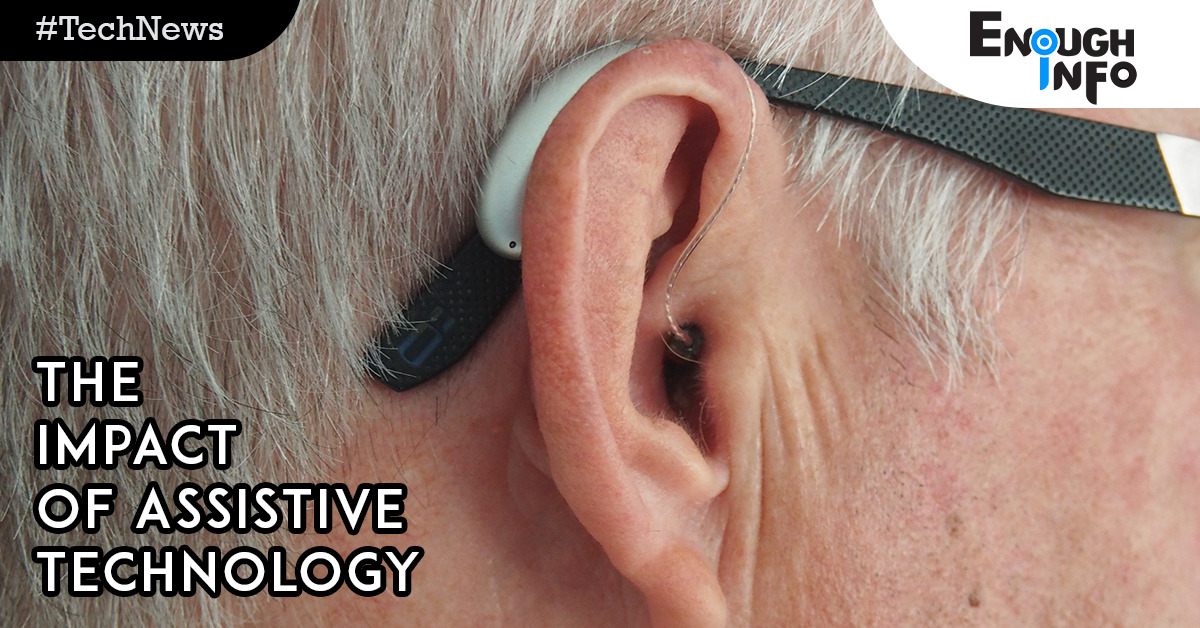The Impact of Assistive Technology on Hearing and Speech Impairments
The Impact of Assistive Technology

The Impact of Assistive Technology on Hearing and Speech Impairments: With the help of assistive technology, people with hearing and speech impairments may now communicate effectively and take part in society to a greater extent. From minor hearing loss to profound deafness, and from speech abnormalities to total speechlessness, hearing and speech impairments cover a wide range of illnesses. EnoughInfo.com

Read Also: Cybersecurity Consulting and Its Importance in the Digital Age
Assistive technology here refers to a broad variety of hardware, software, and other resources created to improve accessibility and communication for people with hearing and speech impairments.
The Impact of Assistive Technology on Hearing and Speech Impairments
Technology has benefited several businesses. Players now play their favorite games online via iGaming instead of at brick-and-mortar casinos. Technology has influenced education, gaming, banking, construction, hospitality, and healthcare. Cybersecurity Consulting and Its Importance in the Digital Age
Disabled persons have benefited from technology in healthcare. In schools and workplaces, assistive technology has made it easier for people with speech and hearing impairments to communicate without human interaction.
Read Also: Technical Architect Job Description
1. Disability in Hearing and Assistive Technology
Adaptive solutions are provided by assistive technology for those who have hearing loss. Among the most popular and effective assistive technologies are cochlear implants and hearing aids. For people with mild to moderate hearing loss, hearing aids can help enhance sound, but cochlear implants can directly stimulate the auditory nerve in people with severe to profound hearing loss, allowing them to hear.
2. Devices for Augmentative and Alternative Communication (AAC) and Speech Impairments:
The invention of Augmentative and Alternative Communication (AAC) technologies has revolutionized communication for those who have speech problems. AAC includes a range of tools, including sophisticated speech-generating technology as well as graphic and communication boards. With the help of these tools, people who are nonverbal or have trouble speaking may interact with others and convey their needs and feelings. Simple Strategies for Building Your Savings(10 Great Strategies)
Read Also: The Pros And Cons Of Artificial Intelligence
3. Software for speech recognition and text-to-speech:
Assistive technology has advanced in its ability to offer remedies for both speech and hearing disorders. Using text-to-speech technology, people with hearing problems can more readily access written material since it translates written text into audible voice. In contrast, speech recognition software improves the capacity of people with speech impairments to connect with technology and communicate through written language by enabling them to manage computers and other devices using their voice.
4. Video Remote Interpreting (VRI) and Video Relay Services (VRS):
The use of video remote interpreting and video relay services has greatly benefited the deaf community. With the aid of a sign language translator, VRS enables sign language users to have video chats with hearing people. VRI, on the other hand, offers real-time sign language interpretation in a variety of situations, including medical consultations, classrooms, and business meetings, allowing deaf people to fully engage in all facets of life.

5. Accessibility to the Internet and closed captioning:
Opportunities and difficulties have come with the internet’s development for those with speech and hearing impairments. Accessible internet material has greatly benefited from assistive technology. For instance, closed captioning makes it possible for hearing-impaired and deaf people to understand audiovisual information like online courses and films. 14 Essential Steps For Optimizing A Website For Mobile
Read Also: Common Types Of Cyber Attacks And How To Protect Your Personal Data
6. Assistive listening devices and hearing loops:
Assistive listening systems, such as hearing loops and assistive listening devices, are being installed in more public places and venues. Hearing loops improve the listening experience for those with hearing impairments in noisy situations or big gatherings by using magnetic induction to send amplified sound straight to hearing aids and cochlear implants. Best Practices For Managing Cash Flow
7. Education and employment accessibility:
Greater accessibility has been promoted by assistive technology in both business and educational contexts. Students and staff with hearing and speech impairments can participate fully in academic and professional activities by integrating AAC devices, hearing loops, and other assistive technologies, fostering inclusion and equitable chances.
Read Also: Benefits of Early Childhood Education (12 Advantages)
Conclusion
Organizations and institutions that create assistive mechanisms keep their users in mind throughout the whole process, much like any industry that continuously improves service delivery by incorporating new high-tech trends. People with disabilities are thus also benefiting from evolution as new technologies continue to upend various spheres of society.
The progress that has been accomplished thus far is heartening, and from what is apparent, this is only the beginning. As technology advances, there is undoubtedly a greater opportunity for the development of inclusive and fair communication experiences.




